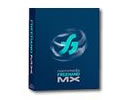'ZDNET Recommends': What exactly does it mean?
ZDNET's recommendations are based on many hours of testing, research, and comparison shopping. We gather data from the best available sources, including vendor and retailer listings as well as other relevant and independent reviews sites. And we pore over customer reviews to find out what matters to real people who already own and use the products and services we’re assessing.
When you click through from our site to a retailer and buy a product or service, we may earn affiliate commissions. This helps support our work, but does not affect what we cover or how, and it does not affect the price you pay. Neither ZDNET nor the author are compensated for these independent reviews. Indeed, we follow strict guidelines that ensure our editorial content is never influenced by advertisers.
ZDNET's editorial team writes on behalf of you, our reader. Our goal is to deliver the most accurate information and the most knowledgeable advice possible in order to help you make smarter buying decisions on tech gear and a wide array of products and services. Our editors thoroughly review and fact-check every article to ensure that our content meets the highest standards. If we have made an error or published misleading information, we will correct or clarify the article. If you see inaccuracies in our content, please report the mistake via this form.
FreeHand MX


Macromedia FreeHand MX
pros and cons
- Strong illustration tools smooth integration with Macromedia’s other Web-centric products excellent multi-page document handling.
- Underpowered Layers palette and static panels make for an awkward interface.
FreeHand 10.0 didn't impress us, but things are looking up for this professional illustration application now that the latest version, called MX, is here. FreeHand MX includes a range of impressive new tools, and its capabilities range from enhanced traditional functions to cutting-edge Web features. FreeHand is equally at home with print, PDF and Flash output. However, we had to deduct points for an interface that remains awkward and is far less intuitive than that of CorelDraw 11. Adobe users should stick with Illustrator, and CorelDraw remains our overall top pick. But designers who need Macromedia MX integration will love FreeHand MX.
Setup & interface
Not surprisingly, FreeHand MX's interface closely resembles that of other programs in the MX family, including Dreamweaver for Web site creation and management, Fireworks for Web graphics and Flash for Web animation. A handsome set of collapsible tabbed palettes -- called panels -- resides on the right side of the display. Most previous FreeHand users will find the panels, such as Color Mixer and Layers, familiar. But Macromedia has also slipped in several new ones, such as Answers, which links you directly to online tutorials and updates; it has also enhanced a few of the Object or Style panels to make it easier to change tool settings and object attributes.
FreeHand also simplifies the process of customising panel groupings. For example, by default, the Object and Document panels are grouped together, but you can also create a new group containing the Object, Swatch and Styles panels instead (via the Group Mixer option in the Panel menu).
Overall, though, FreeHand's panels aren't as flexible and convenient as those in CorelDraw 11. For one thing, although the panels roll up to save you screen space, there's no other way to move or resize them. It's tedious to go through a menu command if you're used to dragging and dropping panels -- as other graphics programs allow. FreeHand isn't as well organised as CorelDraw, either. CorelDraw's intuitive Layer panel, which displays objects and attributes in a hierarchical list, lets you scroll to any object or attribute, such as Fill or Outline, and select it by clicking the entry in the object list. FreeHand's messy method forces you to use two panels instead of one -- outlines, fills and effects display in the Objects panel, while layers show up in a separate panel.
Features
FreeHand has always matched or even exceeded other illustration programs feature for feature. And Macromedia has bestowed even more new tools upon FreeHand MX. For starters, the Connector tool lets you drag and drop flowcharting lines between objects. These lines reroute themselves intelligently to avoid crossing through an object. The editable line styles themselves let you change a line from solid to dotted by using the Object Properties panel. If you make a mistake or want to remove part of an object, the slick new Eraser tool can intelligently delete specific sections of vector objects. When you're sick of drawing in plain solid lines, the Calligraphic pen can give your lines a little flair. Our favourite tool addition, Extrude, turns two-dimensional shapes into three-dimensional solids, complete with lighting controls. This tool even lets you extrude blends of objects, making it surprisingly easy to produce the 3D shapes normally reserved for special solid-modelling programs.
FreeHand MX also introduces a wealth of cool live effects, such as editable drop shadows and bevels. In addition to traditional live effects, such as Transparency, Bevel, Emboss, Shadow and Glow, FreeHand offers distorting effects that include Bend, Ragged, Sketch, Duet and Expand Path. You can add multiple effects to an object and reorder the effects by moving them up or down in the Object panel. Plus, you can save sets of effects as permanent styles so that you can reapply them to future products. Both Adobe Illustrator and CorelDraw have supported live effects for several generations; it's nice to see FreeHand catching up.
Many of FreeHand's tools now feature enhanced interactivity. For example, if you fill an object with a Gradient, a control line appears on the object. By grabbing and dragging the handles at either end of the control line, you can easily position the gradient inside the object. Similarly, dragging the control handles of an extrusion lets you quickly morph the object's shape and position. In the same manner, you can quickly create blends by dragging the Blend tool from one object to another.
If you currently work with Macromedia’s Web programs, such as Dreamweaver, Fireworks and Flash, FreeHand's tight integration gives it a real advantage over Adobe Illustrator and CorelDraw. Flash has become the standard format for vector Web graphics, since its animation files are smaller and therefore download more quickly than bitmap files such as GIFs. FreeHand supports all of the Macromedia formats, including both import and export of Flash SWF, and its powerful text-importing features and multiple page capability make it easy to collect files created in other Macromedia programs and make a presentation for your client within FreeHand. For example, if you’re designing a Web site, you can use FreeHand's new flowcharting tools to outline the Dreamweaver site on one page, display suggested buttons and navigation bars from Fireworks on other pages, embed fancy Flash animation for the client to explore, and include explanatory text where necessary. In our testing, we swiftly created a presentation from sample illustrations, Word text, Illustrator drawings and PNG, TIFF and Flash files. Not only do they look good on-screen, they all output flawlessly to both print and PDF.
Service and support
Thanks to the new Answers panel, which links you directly to online tutorials and updates, FreeHand MX's program help is more accessible than it was in previous versions.
Macromedia also offers online help at the Web-based FreeHand Support Center including FAQs, tutorials and online forums. Macromedia allows two free tech-support calls within the first 90 days of the initial contact. However, after that, you must pay for one of the expensive support plans; the most comprehensive plan, Gold, costs £1,930. This policy may seem exorbitant, but other illustration programs have similar phone-support policies. We called technical support with a procedural question and promptly received an accurate answer from a friendly and professional representative.